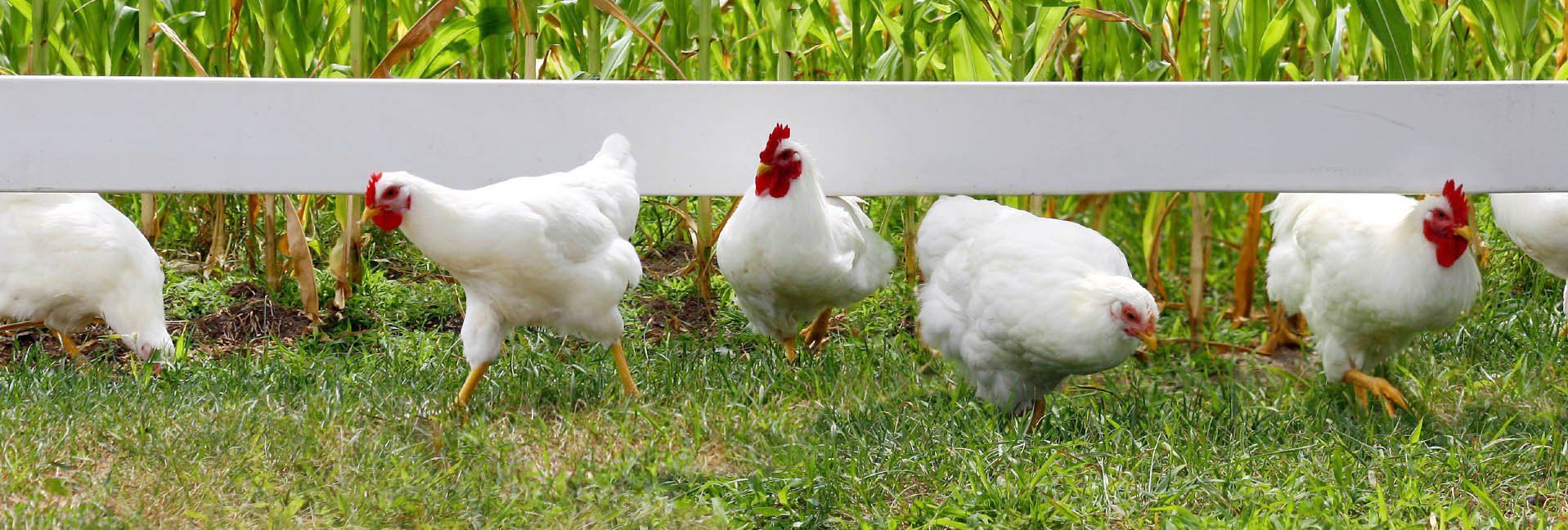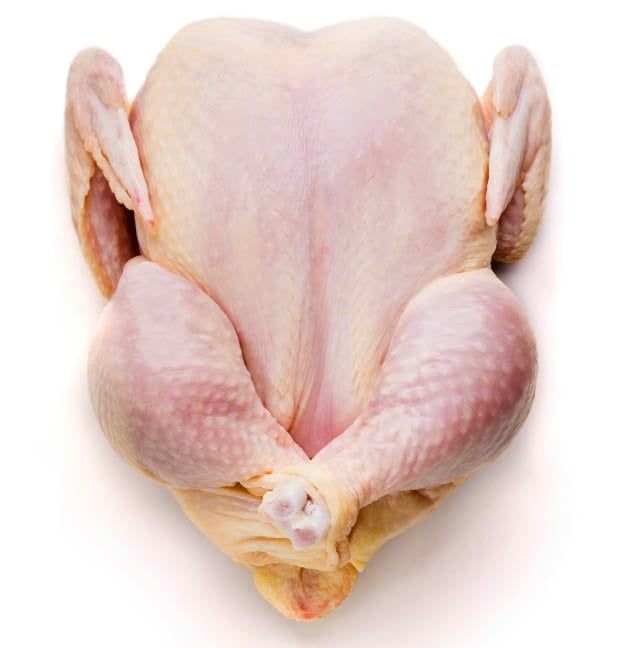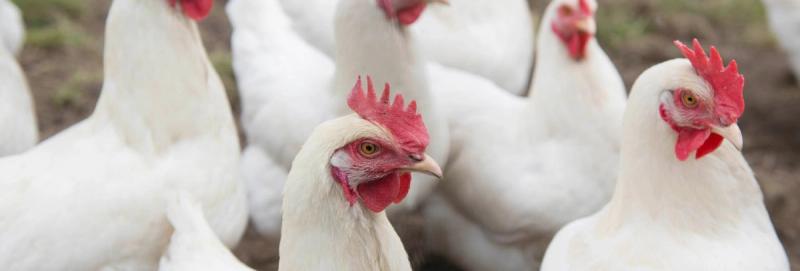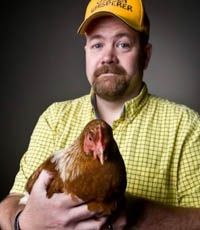How-to Process Your Own Chickens


Raising Backyard Meat Birds Part 2

Four more weeks have passed, and the birds have been processed and placed in the deep freezer. It was a great experience, and I’m glad I was able to document the entire process on my Facebook page, and share it with 12 4-H students and home-school children.
Editor’s note: The first four weeks where Andy receives and begins raising his chicks was presented in the September 2018 edition of AcreageLife. This article presents the final weeks.
What to expect in the final weeks
All eleven birds from Cackle Hatchery survived. I never really noticed the issues some claim these fast-growing meat birds have like heart failure, broken legs, or foot pad issues.
Weeks five and six were pretty normal, and nothing seemed out of the ordinary. The birds were very curious when I entered the coop to add feed and water. They would come right up to me, and even allowed me to handle them. I noticed them taking dust baths and chasing little insects around the coop.
However, weeks seven and eight, the birds were really going through the feed and water. Especially the water! I also noticed the Carefree Enzymes Water Protector was doing its job keeping the water clean and slime-free.
Feed-to-weight issues
They were also becoming much less active. The birds at week five weighed in at around 4 to 5 pounds, week six they weighed in around 5 to 6.5 pounds, week seven they weighed in at around 6.5 to 7.75 pounds, and at processing at eight weeks of age they weighed in around 6.75 to over 8 pounds. The hens obviously weighed a little less than the roosters.
We never withheld feed during the eight-week program until the last four hours before processing. We withheld water the last hour before processing. The eleven birds went through three-and-a-half 50-pound bags of feed over the eight-week period. I used a 20% protein start-to-finish feed.
I would estimate that my total cost to raise these 11 birds to processing was about $100. This includes approximately $50 for the cost of the birds with shipping, and about $50 in feed costs for a total cost-per-bird of about $9.00. I did not figure in the cost of shavings because I already have a ready supply of shavings on the farm. I did add shavings to the coop one time over the eight-week period, and that was after we had a very hard rain which saturated the original shavings.
I also added Sweet PDZ Coop Refresher to the coop about once a week which did an amazing job controlling any odor issues.
Expert help arrives
I was thrilled when my friend, poultry scientist and microbiologist Dr. Brigid McCrea, Ph.D., said she could come and help process the birds. This meant not only could she show me—and all the others on the video—how to properly process these birds, but we could get a first-hand class on the anatomy of the bird inside and out.
Processing day arrived, so about four hours before processing I removed the feeder from the coop. At about an hour before processing I removed the water from the coop. All the 4-H members and homeschoolers we invited arrived to the farm at 10:00 am, and we were all set to go.
The first step was to bring the birds from the coop to the processing area one by one. Dr. McCrea suggests you don’t let the other birds see the killing process. She likes to keep the birds as calm as possible through the entire process.

They were raised humanely and had wonderful treatment for the past eight weeks, so why stop now?
Dispatching, scalding, plucking
Once the bird was selected, she placed it into the killing cone that was mounted on the side of our storage shed with a plastic bucket below to catch the blood. She then proceeded to cut the bird just below the earlobe to allow the blood to slowly drain out. There was no thrashing around or any violent movement from the birds. The bird slowly passed and became limp.
She then took the bird to the scalder, a propane burner base with a aluminum pot filled with water heated to 165 to 175 degrees. She slowly dropped the bird into the pot head first, and submerged it with the tongs. After about 10 seconds, she would test to see if the skin was easy to pinch skin off the feet, and if it was, the bird would be pulled out of the scalder, and then brought to the mechanized plucker.
The old-fashioned way?
The Yardbird Chicken Plucker was totally awesome! Brigid turned on the water source, then turned on the plucker. She dropped the bird in, and in about 15 seconds, the bird was featherless. It was a fantastic process!
After the first few birds were processed, Dr. McCrea and I had a “pluck-off.” We scalded the birds, sat them on the evisceration table, and proceeded to hand pluck the birds. Needless to say, she won, but it was a great experience! Not to mention it really made me appreciate the Yardbird Chicken Plucker that much more!
Then she took the bird over to the evisceration table. That is where she proceeded to process the bird which took about five to seven minutes. Once the processing was complete, she submerged the bird into an ice bath in a cooler.
Having the correct tools
I will say that the processing process was a breeze because of the supplies we received from Stromberg’s Chickens. I requested killing knives, boning knives, heavy duty clippers, and a killing cone. Not only did they send me everything on my list, but they also sent an awesome evisceration table with a built-in sink!
Once the birds were in the ice bath for four hours, they were ready to be placed in the freezer or refrigerator.
Meat made in minutes
The next morning, Dr. McCrea returned to the farm to record a video on how to cut up and prepare a chicken for cooking. She proceeded to show us all how to separate the legs, wings, breasts, and thighs to see how they are packaged in the stores.
We kept five of the chickens whole for roasting, and cut up the other six into parts for frying and such. We also had two bags of soup parts for soup and broth. We placed all the chicken into two-gallon freezer bags.
If I do this again, I will try to budget in a heat sealer to shrink wrap the chicken to help prevent freezer burn, and to help the birds keep longer in the freezer.
I have a feeling, however, we will be going through these eleven birds faster than we think.
In fact, this past Sunday, I pulled a whole roaster out of the refrigerator, placed it into our InstantPot, added cut-up potatoes, carrots, mushrooms, salt and pepper, and set it for 50 minutes. It was absolutely amazing! Three days later, we are still enjoying meals for lunch.
Educational and worthwhile
Overall, this was an awesome project, and I’m so glad I had the opportunity to video the whole process for my Facebook fans and followers. I truly believe that the next big thing in the backyard chicken movement will be small scale meat bird production, and with the comments I received throughout this entire process, many are already getting started.
The next meat birds I’m going to raise will be a slower growing meat bird like a red or black broiler, and then after those, I will raise a dual-purpose bird like a Black Australorp so people can see the difference in raising the three types—including cost and time requirements—so they can choose the right meat bird for their backyard.
Until Next Time,
Power to the Poultry!
Tags:Chicken Chatter

Acreage Life is part of the Catalyst Communications Network publication family.
















